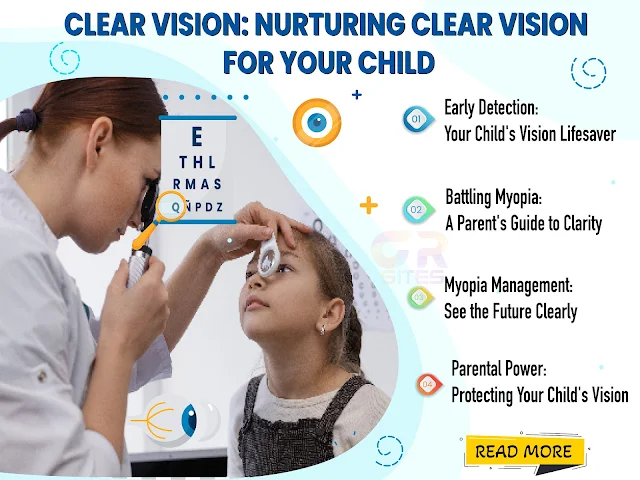
One fine day, my kid's teacher mentioned something that sent a chill down my spine. She casually remarked that my 5-year-old was having trouble viewing the board during class. My immediate reaction was to dismiss it as nothing more than a minor inconvenience—maybe a play of light or my child's momentary lack of focus. Little did I know that this innocuous comment would lead to a profound discovery about my child's vision.
Visit to the Ophthalmologist: Uncovering Myopia
- Eye Assessment: At the ophthalmologist's office, my child underwent a comprehensive eye assessment. It was during this process that we got our first inkling that something might be amiss. The eye chart test revealed that my little one had difficulty reading the smaller letters, which were a blur.
- Diagnosis: Myopia - The ophthalmologist confirmed our suspicions: myopia. While it was not an easy pill to swallow, it was the clarity I needed to understand why my child had been struggling. Myopia was the culprit behind those squints and classroom difficulties.
- Importance of Early Detection: Early detection of myopia is crucial. The sooner you identify it, the more effectively you can manage its progression. Left unaddressed, myopia can lead to severe vision problems in the future. It's why that initial visit to the ophthalmologist became a turning point in our journey.
Understanding Childhood Myopia
- A Growing Epidemic: Myopia's prevalence among children is on the rise globally. Factors like increased screen time, reduced outdoor activities, and genetic predisposition contribute to its growth. It's no longer an isolated issue; it's a widespread concern.
- Progression Conundrum: What's especially concerning about childhood myopia is its progressive nature. Without intervention, myopia tends to worsen over time, increasing the risk of severe vision problems later in life. This is precisely why early detection and management are critical.
Managing Childhood Myopia
- Role of Corrective Lenses: One of the most common ways to manage childhood myopia is through corrective lenses, typically eyeglasses or contact lenses. These lenses help your child see clearly and more comfortably.
- Myopia Control Measures: In recent years, various myopia control methods have emerged. These interventions aim to slow down the progression of myopia in children. Some options include atropine eye drops, multifocal contact lenses offered by Essilor – Stellest, Zeiss Myocare, etc., and orthokeratology.
- Lifestyle Adjustments: Encouraging outdoor play, limiting screen time, and ensuring good lighting conditions for reading are simple yet effective lifestyle adjustments that can complement other myopia management strategies.
Conclusion: Nurturing Clear Vision and Bright Futures
Discovering myopia in my child was initially unsettling, but it led to a journey of understanding and proactive management. Childhood myopia is a growing concern, but with early detection, the right interventions, and parental support, we can ensure that our children see clearly and embrace bright futures. Remember, as a parent, you play a pivotal role in safeguarding your child's vision. So, stay vigilant, be informed, and together, we can navigate the path to clear vision.
No comments:
Post a Comment